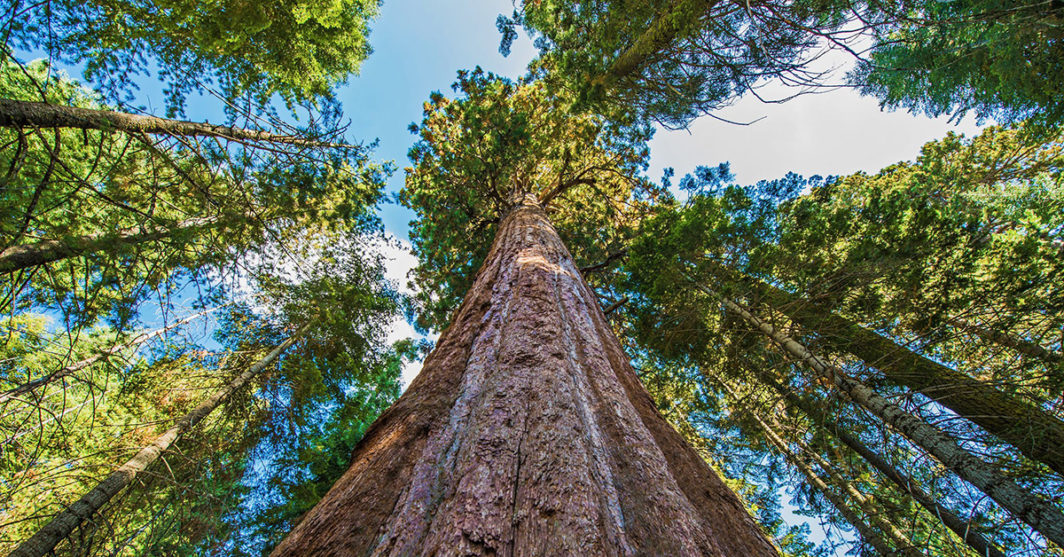Wander around the formal gardens at Grim’s Dyke and you’ll be surrounded by the breath-taking beauty of nature. Lady Gilbert planted a stunning array of flowers and plants, with the most noticeable being several Redwood trees, now over 100 years old.
As with any Victorian gardener with status, Lady Gilbert would have loved exotic plants – and would have relished planting this giant tree.
Here’s 10 facts about this wooden giant.
#1: There are three types of Redwood
The Sequoia sempervirens (or coast redwood), likes moist, humid climates – as the fog and mist help keep it moist. The Metasequoia glyptostroboides (or dawn redwood) is native to China and only discovered in 1940. Finally, we have the Sequoiadendron giganteum (or giant redwood), sometimes also known as Wellingtonia. This is the one bought over to the UK. It likes a higher elevation, snowy winters and dry summers. Shorter than the coast redwood, but it has a wider girth.
#2: William Lobb first introduced them to the Europeans in 1852.
He’d heard about the giant trees seen in the California Sierra Nevada range foothills and wanted to see them for himself. Once there, he collected the seeds and specimens, bringing them back to the UK and selling them the Victorian gentry.
#3: Redwoods became a status symbol in Britain
1,000 of Redwood saplings were planted by the Victorians during this period, as the seeds and saplings could only be bought by those with status and money.
#4: There was a long-standing battle over the official name of this giant tree
The race began, when Lobb bought the seeds and samples back to the UK. Both the US and the UK wanted to name it. Dr Albert Kellogg, one of the founders of the California Academy of Sciences, wanted to name it after the first president of the US, whilst in the UK, Prof John Lindley Horticultural Society of London wanted to name it in honour of the Duke of Wellington. He officially named it the Wellingtonia gigantean in 1853. However, the Wellingtonia name was already in use, which made the official name invalid. That didn’t stop it being used though and the argument over the name went on for years – finally being settled in 1939!
#5: This giant tree’s scientific name
Officially, it’s now known as Sequoiadendron giganteum – but it’s often still called the Wellingtonia…
#6: Redwoods tower above the British Oak!
Routinely reaching a height of 100 metres, this large conifer tree towers above the oak – easily growing to almost 3 times the height of an oak tree.
#7: Redwoods are an endangered species
Due to the decline of their specific habitat needs, they’re now considered an endangered species.
#8: They have fire resistant bark
The bark of Redwood is thick, fibrous and furrowed. It also needs controlled burning around it, as the heat rises into the canopy and helps the cones dry and open. Fire also keeps the floor clear for easier seed germination. Incidentally, the thickest bark recorded is 3 feet deep!
#9: The wood itself is also resistant to decay
However, older trees are not good for construction, as they’re too fibrous and brittle. Younger plantation-grown trees have however, been used.
#10: They’re a major tourist attraction
No matter where Redwoods are planted, they draw quite a crowd. This makes them a major tourist attraction – as we at Grim’s Dyke can attest! They also have a huge part to play in horticulture too.


